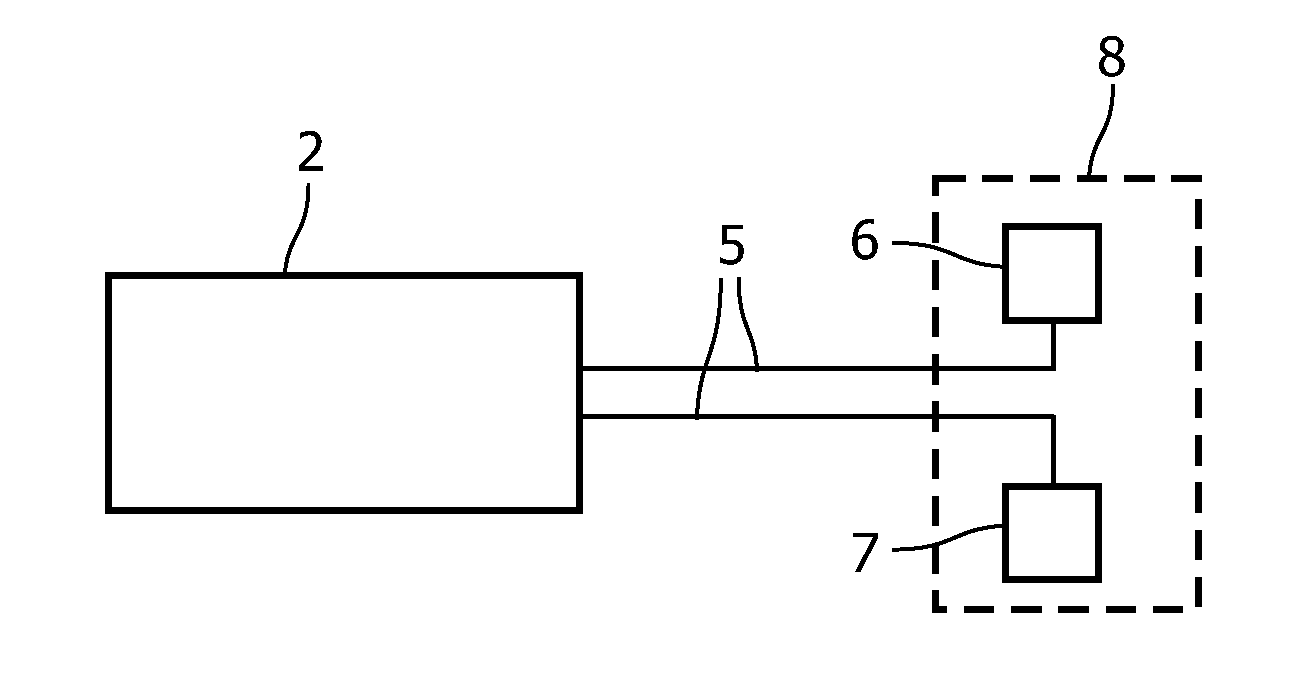Method for reconstructing a fluorescent image of the interior of a turbid medium and device for imaging the interior of a turbid medium
- Summary
- Abstract
- Description
- Claims
- Application Information
AI Technical Summary
Benefits of technology
Problems solved by technology
Method used
Image
Examples
first embodiment
[0020]An embodiment of the present invention will now be described with reference to FIGS. 1 and 2. The device for imaging the interior of a turbid medium according to the embodiment is a device for diffuse optical tomography (DOT). In particular, the device is adapted for examination of female breasts. The overall construction of such a device is known in the art. The device comprises a bed (not shown) on which the person under examination is lying in a prone position. An opening is formed in the bed below which a measurement volume 4 extends. The measurement volume 4 is shown in FIG. 1.
[0021]In the device shown in FIG. 1, the turbid medium 1 to be examined is a female human breast. The measurement volume 4 is bounded by a receiving portion 2 adapted to receive the turbid medium 1, as schematically indicated in FIG. 1. The receiving portion 2 has a cup-like shape and is provided with an opening 3. As can be seen in FIG. 1, the turbid medium 1 to be examined is placed in the measure...
second embodiment
[0033]A second embodiment will be described in the following. The second embodiment substantially corresponds to the first embodiment described above and only differs in that the fluorescent contrast agent is considered as one of the constituents the concentration of which is determined from the attenuation measurements in the second range of wavelengths. Thus, according to the second embodiment, the self-absorption of the fluorescent contrast agent for the fluorescence light is taken into account for. This leads to improved fluorescence images, in particular in case of high concentrations of the fluorescent contrast agent.
[0034]According to the second embodiment, the concentration cf(r) of the fluorescent contrast agent and its absorption coefficient μaf are comprised in the equation
μa(λ,r)=∑ici(r)·μai(λ,r),
i.e. the term cf(r) μaf(λ, r) is taken into account in the summation. Thus, the concentration of the fluorescent contrast agent is already (pre-) calculated from the attenuation...
PUM
 Login to View More
Login to View More Abstract
Description
Claims
Application Information
 Login to View More
Login to View More - R&D
- Intellectual Property
- Life Sciences
- Materials
- Tech Scout
- Unparalleled Data Quality
- Higher Quality Content
- 60% Fewer Hallucinations
Browse by: Latest US Patents, China's latest patents, Technical Efficacy Thesaurus, Application Domain, Technology Topic, Popular Technical Reports.
© 2025 PatSnap. All rights reserved.Legal|Privacy policy|Modern Slavery Act Transparency Statement|Sitemap|About US| Contact US: help@patsnap.com



